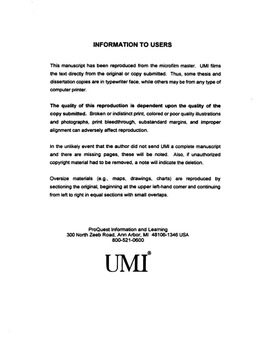| dc.contributor.advisor | Xue, Ming, | en_US |
| dc.contributor.author | Nutter, Paul Andrew. | en_US |
| dc.date.accessioned | 2013-08-16T12:18:52Z | |
| dc.date.available | 2013-08-16T12:18:52Z | |
| dc.date.issued | 2003 | en_US |
| dc.identifier.uri | https://hdl.handle.net/11244/556 | |
| dc.description.abstract | To help restore error variance and LAM ensemble dispersion, a new method is developed to apply statistically consistent LBC perturbations that remain spatially and temporally coherent while passing through the boundaries. The amplitude of such perturbations are designed to increase with time while mimicking the error variance lost through the effects of coarsely resolved and temporally interpolated LBCs. With a few noted exceptions, the LBC perturbations are shown to capably restore error variance growth and LAM ensemble dispersion without compromising the integrity of the individual solutions. | en_US |
| dc.description.abstract | To examine the above problem, modified barotropic channel model with periodic east-west boundaries is constructed and shown to produce flows bearing resemblance to the real atmospheric circulation. Ten-member ensemble simulations are produced over many cases on the periodic channel domain and each of four smaller nested domains. Lateral boundary effects are specifically isolated since the simulations are perfect except for initial condition perturbations and the use of coarsely resolved and/or temporally interpolated "one-way" LBCs on the nested domains. Statistical results accumulated over 100 independent cases demonstrate the lack of growth in error variance spectra, particularly at wavelengths shorter than 500 km. An expression is developed that links total error variance to ensemble dispersion while accounting for spatial and ensemble biases. The balances required by this expression show that LBC constraints on small scale error variance growth are directly responsible for underdispersive LAM ensemble simulations. | en_US |
| dc.description.abstract | It is known that "one-way" lateral boundary conditions (LBCs) constrain the growth of initial perturbations in limited-area model (LAM) ensemble forecasts, therefore reducing ensemble dispersion. LBCs provided by external models typically lack fine-scale features, and in the case of ensemble forecasts, also lack consistent perturbations. Perturbations growing on the nested domain become displaced by the coarsely resolved LBCs while the domain size itself limits the maximum wave-length attainable by the perturbations. Another aspect of the boundary condition problem that has previously received little direct attention is the impact of boundary condition update frequency. Commonly used linear interpolation between relatively infrequent boundary condition updates acts as a filter that exacerbates the scale deficiency problem. | en_US |
| dc.format.extent | xv, 156 leaves : | en_US |
| dc.subject | Weather forecasting. | en_US |
| dc.subject | Geophysics. | en_US |
| dc.subject | Atmospheric circulation. | en_US |
| dc.subject | Long-range weather forecasting. | en_US |
| dc.subject | Physics, Atmospheric Science. | en_US |
| dc.title | Effects of nesting frequency and lateral boundary perturbations on the dispersion of limited-area ensemble forecasts. | en_US |
| dc.type | Thesis | en_US |
| dc.thesis.degree | Ph.D. | en_US |
| dc.thesis.degreeDiscipline | School of Meteorology | en_US |
| dc.note | Source: Dissertation Abstracts International, Volume: 64-01, Section: B, page: 0252. | en_US |
| dc.note | Adviser: Ming Xue. | en_US |
| ou.identifier | (UMI)AAI3077422 | en_US |
| ou.group | College of Atmospheric & Geographic Sciences::School of Meteorology | |
